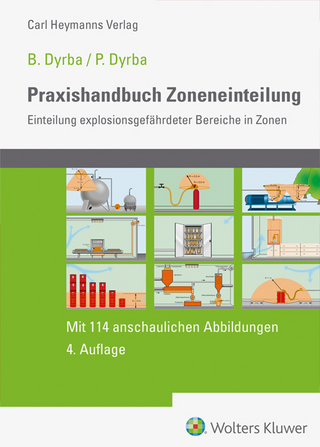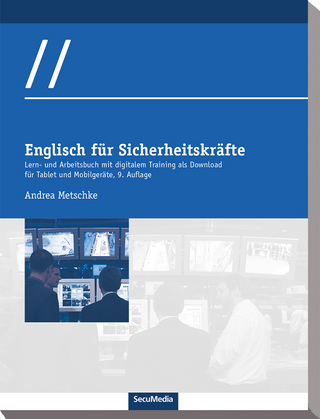
Plasma Physics and Engineering
Taylor & Francis Inc (Verlag)
978-1-56032-848-3 (ISBN)
- Titel erscheint in neuer Auflage
- Artikel merken
Plasma engineering is a rapidly expanding area of science and technology with increasing numbers of engineers using plasma processes over a wide range of applications. An essential tool for understanding this dynamic field, Plasma Physics and Engineering provides a clear, fundamental introduction to virtually all aspects of modern plasma science and technology, including plasma chemistry and engineering, combustion, chemical physics, lasers, electronics, methods of material treatment, fuel conversion, and environmental control. The book contains an extensive database on plasma kinetics and thermodynamics, many helpful numerical formulas for practical calculations, and an array of problems and concept questions.
Prof. Alexander Fridman is Nyheim Chair Professor of Drexel University and Director of Drexel Plasma Institute. His research focuses on plasma approaches to material treatment, fuel conversion and environmental control. Prof. Fridman has over 30 years of plasma research in national laboratories and universities of Russia, France, and the United States. He has published 5 books and 350 papers, and received numerous honors for his work, including Stanley Kaplan Distinguished Professorship in Chemical Kinetics and Energy Systems, George Soros Distinguished Professorship in Physics, and the State Prize of the USSR for discovery of selective stimulation of chemical processes in non-thermal plasma. Prof. Lawrence A. Kennedy has been the Dean of Engineering and a Professor of Mechanical Engineering at the University of Illinois at Chicago since 1994. He has published over 200 archival publications and over 180 limited circulation reports and abstract reviewed papers. Prof. Kennedy has also won numerous awards such as The Ralph W. Kurtz Distinguished Professor of Mechanical Engineering at OSU (1992-1995) and the Ralph Coats Roe Award from ASEE (1993). He is a Fellow of the American Physical Society, American Society of Mechanical Engineers, American Institute of Aeronautics and Astronautics and the American Association for the Advancement of Science.
PART 1. FUNDAMENTALS OF PLASMA PHYSICS AND PLASMA CHEMISTRY.
CHAPTER 1. Introduction
CHAPTER 2. ELEMENTARY PROCESSES OF CHARGED SPECIES IN PLASMA.
2.1. Elementary Charged Particles In Plasma, And Their Elastic And Inelastic Collisions.
2.2. Ionization Processes.
2.3. Mechanisms Of Electron Losses: The Electron-Ion Recombination.
2.4. The Electron Losses Due To Formation Of Negative Ions: Electron Attachment And Detachment Processes.
2.5. The Ion-Ion Recombination Processes.
2.6. The Ion-Molecular Reactions.
2.7. Problems and Concept Questions.
CHAPTER 3. ELEMENTARY PROCESSES OF EXCITED MOLECULES AND ATOMS IN PLASMA.
3.1. Electronically Excited Atoms And Molecules In Plasma.
3.2. Vibrationally And Rotationally Excited Molecules.
3.3. Elementary Processes Of Vibrational, Rotational And Electronic Excitation Of Molecules In Plasma.
3.4. Vibrational (VT) Relaxation, Landau-Teller Formula.
3.5. Vibrational Energy Transfer Between Molecules, VV-Relaxation Processes.
3.6. Processes Of Rotational And Electronic Relaxation Of Excited Molecules.
3.7. Elementary Chemical Reactions Of Excited Molecules, Fridman - Macheret a-Model.
3.8. Problems and Concept Questions.
CHAPTER 4. PLASMA STATISTICS AND KINETICS OF CHARGED PARTICLES.
4.1. Statistics And Thermodynamics Of Equilibrium And Non-Equilibrium Plasmas, The Boltzmann, Saha And Treanor Distributions.
4.2. The Boltzmann And Fokker-Planck Kinetic Equations, Electron Energy Distribution Functions.
4.3. Electric And Thermal Conductivity In Plasma, Diffusion Of Charged Particles.
4.4. Breakdown Phenomena: The Townsend And Spark Mechanisms, Avalanches, Streamers And Leaders.
4.5. Steady-State Regimes Of Non-Equilibrium Electric Discharges.
4.6. Problems and Concept Questions.
CHAPTER 5. KINETICS OF EXCITED PARTICLES IN PLASMA.
5.1.Vibrational Distribution Functions In Non-Equilibrium Plasma, The Fokker-Planck Kinetic Equation.
5.2. Non-Equilibrium Vibrational Kinetics: eV-Processes, Polyatomic Molecules, Non-Steady-State Regimes.
5.3. Macrokinetics Of Chemical Reactions And Relaxation Of Vibrationally Excited Molecules.
5.4. Vibrational Kinetics In Gas Mixtures, Isotopic Effect In Plasma Chemistry.
5.5. Kinetics Of Electronically And Rotationally Excited States, Non-Equilibrium Translational Distributions, Relaxation And Reactions Of "Hot Atoms" In Plasma.
5.6. Energy Efficiency, Energy Balance And Macrokinetics Of Plasma-Chemical Processes.
5.7. Energy Efficiency Of Quasi-Equilibrium Plasma-Chemical Systems, Absolute, Ideal And Super-Ideal Quenching.
5.8. Problems and Concept Questions.
CHAPTER 6. ELECTROSTATICS, ELECTRODYNAMICS AND FLUID MECHANICS OF PLASMA.
6.1. Electrostatic Plasma Phenomena: Debye-Radius And Sheaths, Plasma Oscillations And Plasma Frequency.
6.2. Magneto-Hydrodynamics Of Plasma.
6.3. Instabilities Of Low Temperature Plasma.
6.4. Non-Thermal Plasma Fluid Mechanics In Fast Subsonic And Supersonic Flows.
6.5. Electrostatic, Magneto-Hydrodynamic And Acoustic Waves In Plasma.
6.6. Propagation Of Electro-Magnetic Waves In Plasma.
6.7. Emission And Absorption Of Radiation In Plasma, Continuous Spectrum.
6.8. Spectral Line Radiation In Plasma.
6.9. Non-Linear Phenomena In Plasma.
6.10. Problems and Concept Questions.
PART 2. PHYSICS AND ENGINEERING OF ELECTRIC DISCHARGES.
CHAPTER 7. GLOW DISCHARGE.
7.1. Structure And Physical Parameters Of Glow Discharge Plasma. Current-Voltage Characteristics, Comparison Of Glow And Dark Discharges.
7.2. Cathode And Anode Layers Of A Glow Discharge.
7.3. Positive Column Of Glow Discharge.
7.4. Glow Discharge Instabilities.
7.5. Different Specific Glow Discharge Plasma Sources.
7.6. Problems and Concept Questions.
CHAPTER 8. ARC DISCHARGES.
8.1. Physical Features, Types, Parameters And Current-Voltage Characteristics Of Arc Discharges.
8.2. Mechanisms Of Electron Emission From Cathode.
8.3. Cathode And Anode Layers In Arc Discharges.
8.4. Positive Column Of Arc Discharges.
8.5. Different Configurations Of Arc Discharges.
8.6. Gliding Arc Discharge.
8.7. Problems and Concept Questions.
CHAPTER 9. NON-EQUILIBRIUM COLD ATMOSPHERIC PRESSURE PLASMAS: CORONA, DIELECTRIC BARRIER AND SPARK DISCHARGES.
9.1. The Continuous Corona Discharge.
9.2. The Pulsed Corona Discharge.
9.3. Dielectric-Barrier Discharge.
9.4. Spark Discharges.
9.5. Problems and Concept Questions.
CHAPTER 10. PLASMA CREATED IN HIGH FREQUENCY ELECTROMAGNETIC FIELDS:
RADIO-FREQUENCY (RF), MICROWAVE AND OPTICAL DISCHARGES.
10.1. Radio-Frequency (RF) Discharges At High Pressures, Inductively Coupled Thermal RF Discharges.
10.2. Thermal Plasma Generation In Microwave And Optical Discharges.
10.3. Non-Equilibrium Radio-Frequency (RF) Discharges, General Features Of Non-Thermal Capacitively-Coupled (CCP) Discharges.
10.4. Non-Thermal Capacitively-Coupled (CCP) Discharges Of Moderate Pressure.
10.5. Low Pressure Capacitively-Coupled RF Discharges.
10.6. Asymmetric, Magnetron And Other Special Forms Of Low Pressure Capacitive RF-Discharges.
10.7. Non-Thermal Inductively-Coupled (ICP) Discharges.
10.8. Non-Thermal Low-Pressure Microwave And Other Wave-Heated Discharges.
10.9. Non-Equilibrium Microwave Discharges Of Moderate-Pressure.
10.10. Problems and Concept Questions.
CHAPTER 11. DISCHARGES IN AEROSOLS, DUSTY PLASMAS.
11.1. Photo-Ionization Of Aerosols.
11.2.Thermal Ionization Of Aerosols.
11.3. Electric Breakdown Of Aerosols.
11.4. Steady-State Dc Electric Discharge In Heterogeneous Medium.
11.5. Dusty Plasma Formation, Evolution Of Nano-Particles In Plasma.
11.6. Critical Phenomena In Dusty Plasma Kinetics.
11.7. Non-Equilibrium Clusterization In Centrifugal Field.
11.8. Dusty Plasma Structures: Phase Transitions, Coulomb Crystals, Special Oscillations.
11.9. Problems and Concept Questions.
CHAPTER 12. ELECTRON BEAM PLASMAS.
12.1.Generation And Properties Of Electron-Beam Plasmas.
12.2. Kinetics Of Degradation Processes, Degradation Spectrum.
12.3. Plasma-Beam Discharge.
12.4. Non-Equilibrium High-Pressure Discharges Sustained By High-Energy Electron Beams.
12.5. Plasma In Tracks Of Nuclear Fission Fragments, Plasma Radiolysis.
12.6. Dusty Plasma Generation By A Relativistic Electron Beam.
12.7. Problems and Concept Questions.
| Erscheint lt. Verlag | 15.4.2004 |
|---|---|
| Zusatzinfo | 1903 equations; 3 Halftones, black and white; 56 Tables, black and white; 331 Illustrations, black and white |
| Verlagsort | Washington |
| Sprache | englisch |
| Maße | 152 x 229 mm |
| Gewicht | 1293 g |
| Themenwelt | Technik |
| ISBN-10 | 1-56032-848-7 / 1560328487 |
| ISBN-13 | 978-1-56032-848-3 / 9781560328483 |
| Zustand | Neuware |
| Informationen gemäß Produktsicherheitsverordnung (GPSR) | |
| Haben Sie eine Frage zum Produkt? |
aus dem Bereich



